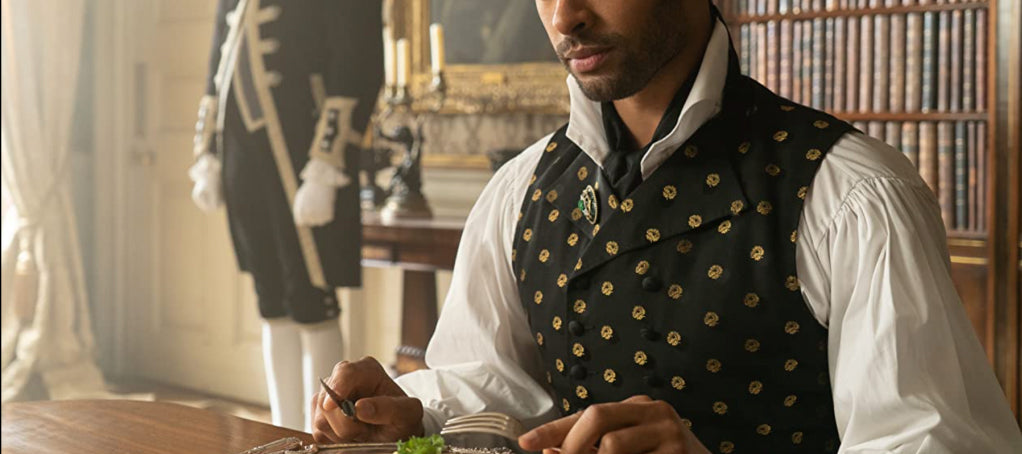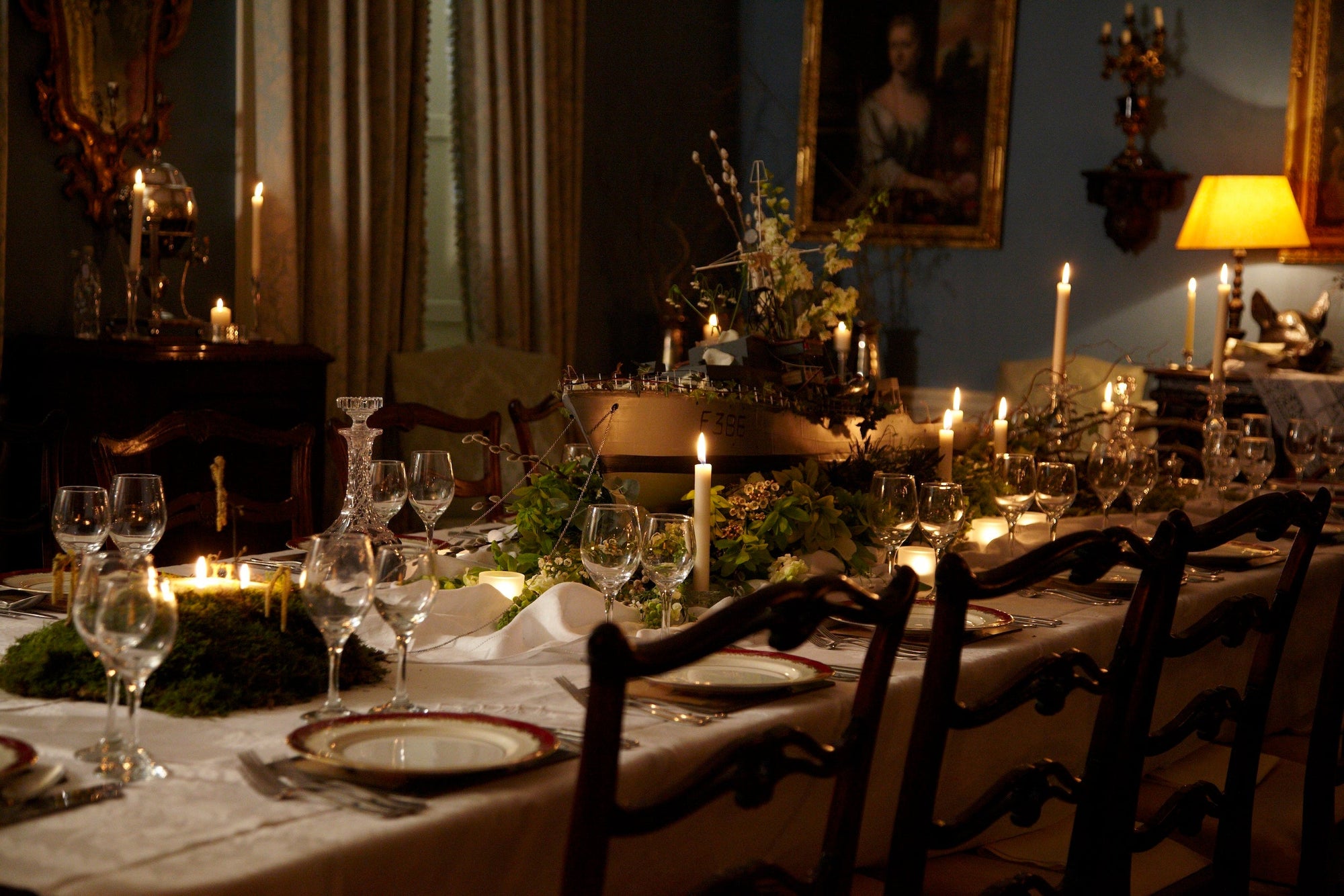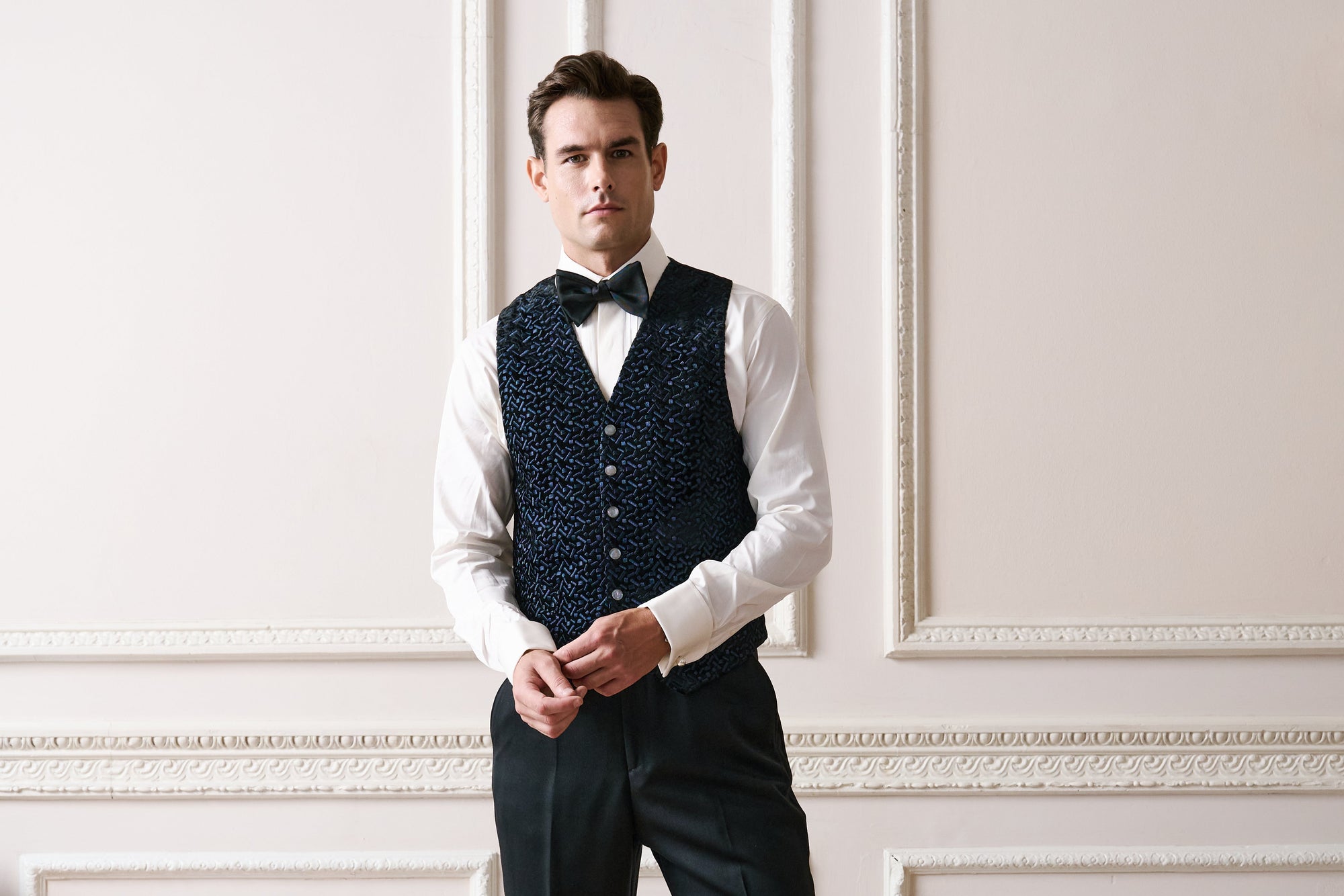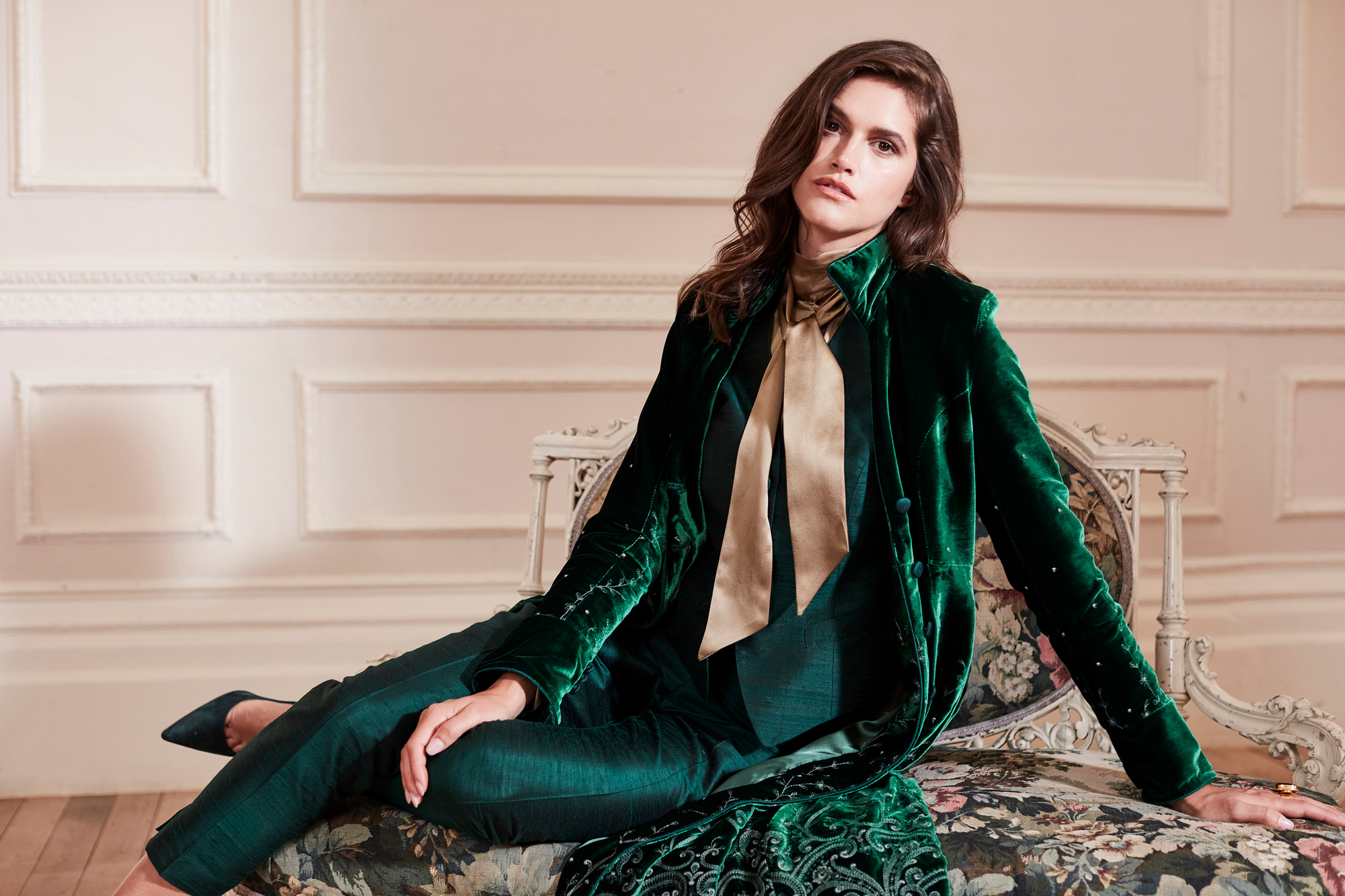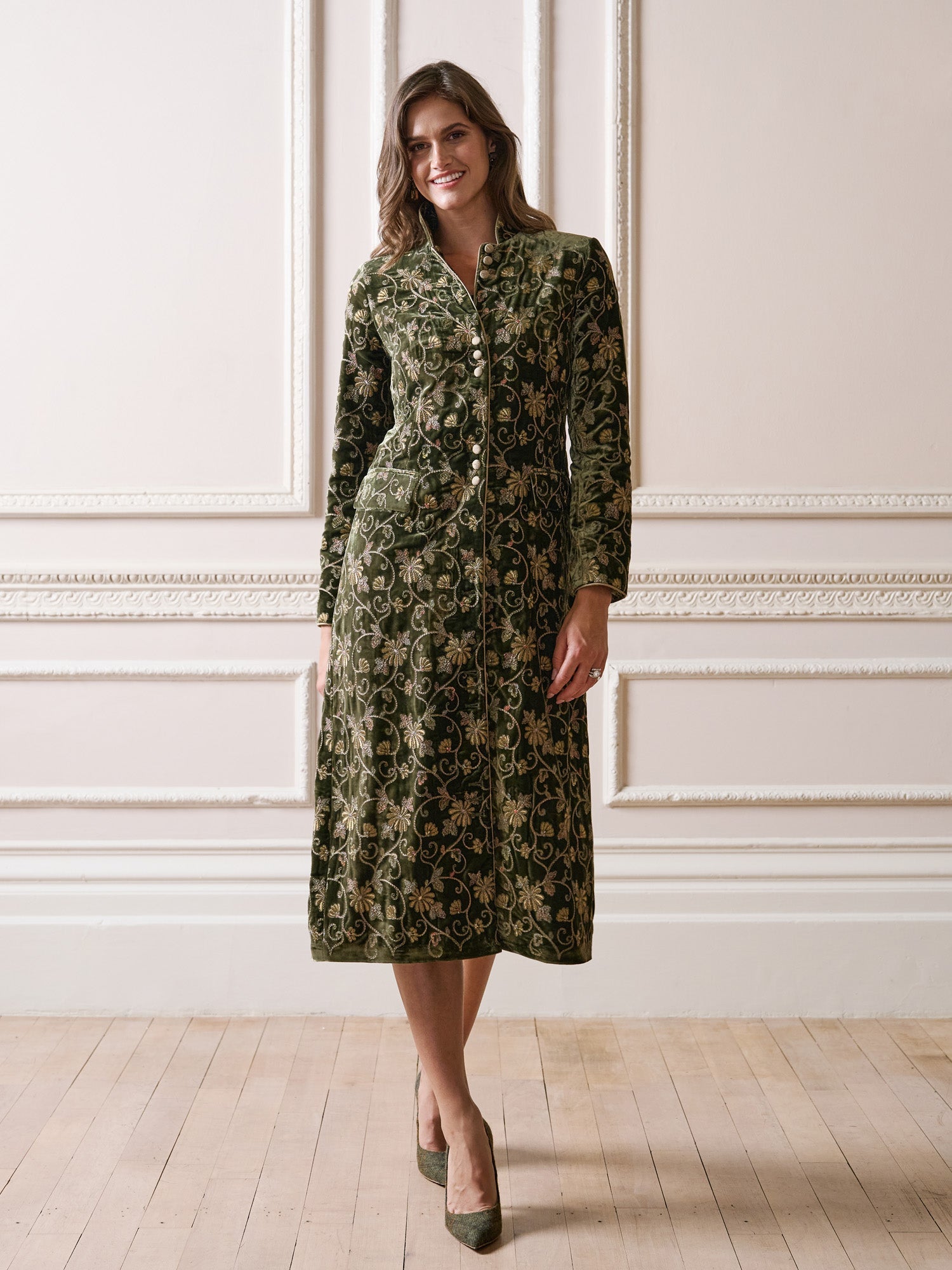Following on from our Bridgerton style eulogy (if you haven't read that then click here), we wanted to bring your attention to an element of style in Shonda Rhimes compelling period drama that was very important to the Regency gent - which is of course the waistcoat. Bridgerton's costume designer Ellen Mirojnik stuck to the Regency script for the most part when it came to waistcoats (pronounced 'westkit' back in the day), with the two most popular styles being evident on the leading male actors, Regé-Jean Page and Jonathan Bailey, who play the Duke of Hastings and Anthony Bridgerton respectively. The former is more often than not seen in a flamboyant embroidered style of waistcoat, whereas the latter prefers an all-white style.


IVORY ALBERT SILK |
IVORY BOTANICS SILK |
CREAM GABARDINE WOOL |
In reality, each style served a different purpose. For evening affairs, a stylish gentleman of the ton would typically wear a crisp white, cream, or even pure black waistcoat constructed of silk or cashmere, and this would often include tonal embroidery. This was much in keeping with Beau Brummell's edict that a gentleman's formal attire should be quite minimalistic, in stark contrast to the vulgarity of style seen in France and eventually the UK over past decades.
For daily affairs, however, colour and pattern reigned, for what gentleman would not want to be noticed on his daily sojourn around St. James' Park?! Dandy types would naturally opt for the most extravagant styles, with bold colours and fancy floral embroidery being popular (and the more flagrant of these would also wear their flamboyant styles at evening functions, God strike them down!)


NAVY WINNINGTON SILK |
ROSE DAVENPORT SILK |
BLACK BEES SILK |
There were some structural differences in the Regency waistcoats compared to the one's that Favourbrook creates today, the most obvious one being the length. Regency tailors would cut the waistcoat long enough so that it could be seen both above and below a buttoned tailcoat. Hence they were often designed with large lapels or wide collars that could be popped up in order to better frame the pièce de résistance - the cravat! Also important were the front pockets of the waistcoat, which would house a fob watch, a calling card, and perhaps a little small change should one find oneself in a salubrious public house whose landlord would prefer it if you didn't run a tab! Single-breasted styles were definitely the more popular in Regency England, whereas today the double-breasted cut is deemed the more formal.

PINK CHATSWORTH SILK |
CHARCOAL PINK BRIMSTONE |
RED BEES SILK |
Back to 2021, and gentlemen these days aren't so restricted by the rules of sartorial engagement. Of course there are some hard and fast caveats that must be adhered to when it comes to the waistcoat (eg bottom button undone on a DB; the length must always cover the waistband be at least an inch...), but generally speaking, the style of the waistcoat can be freestyled. Here at Favourbrook, we're big advocates of the flamboyant waistcoat, especially with morning dress. For one, it sets you apart from the crowd and shows confidence and personality.
But more than that, dressing up should be fun, especially given the last 12 months! A brightly coloured waistcoat or one with ornate patterns or embroidery is something that will make your formal attire sing. An expensive suit will go unnoticed to all except those with a trained eye, but the extravagant waistcoat will captivate all. That doesn't mean it has to be a riot of pattern and colour - even a darkly coloured waistcoat with a contrast geometric pattern will turn heads and make you feel good about yourself.
